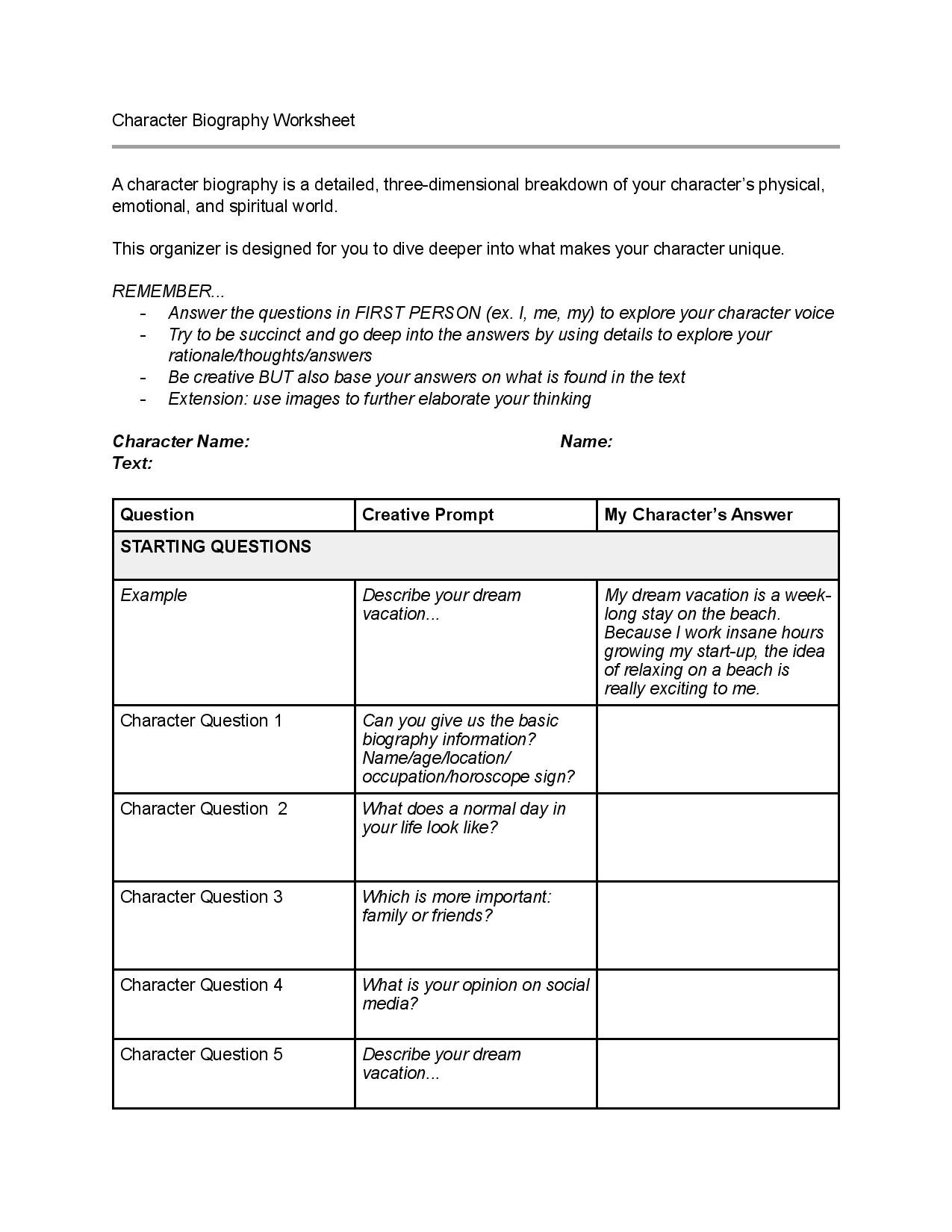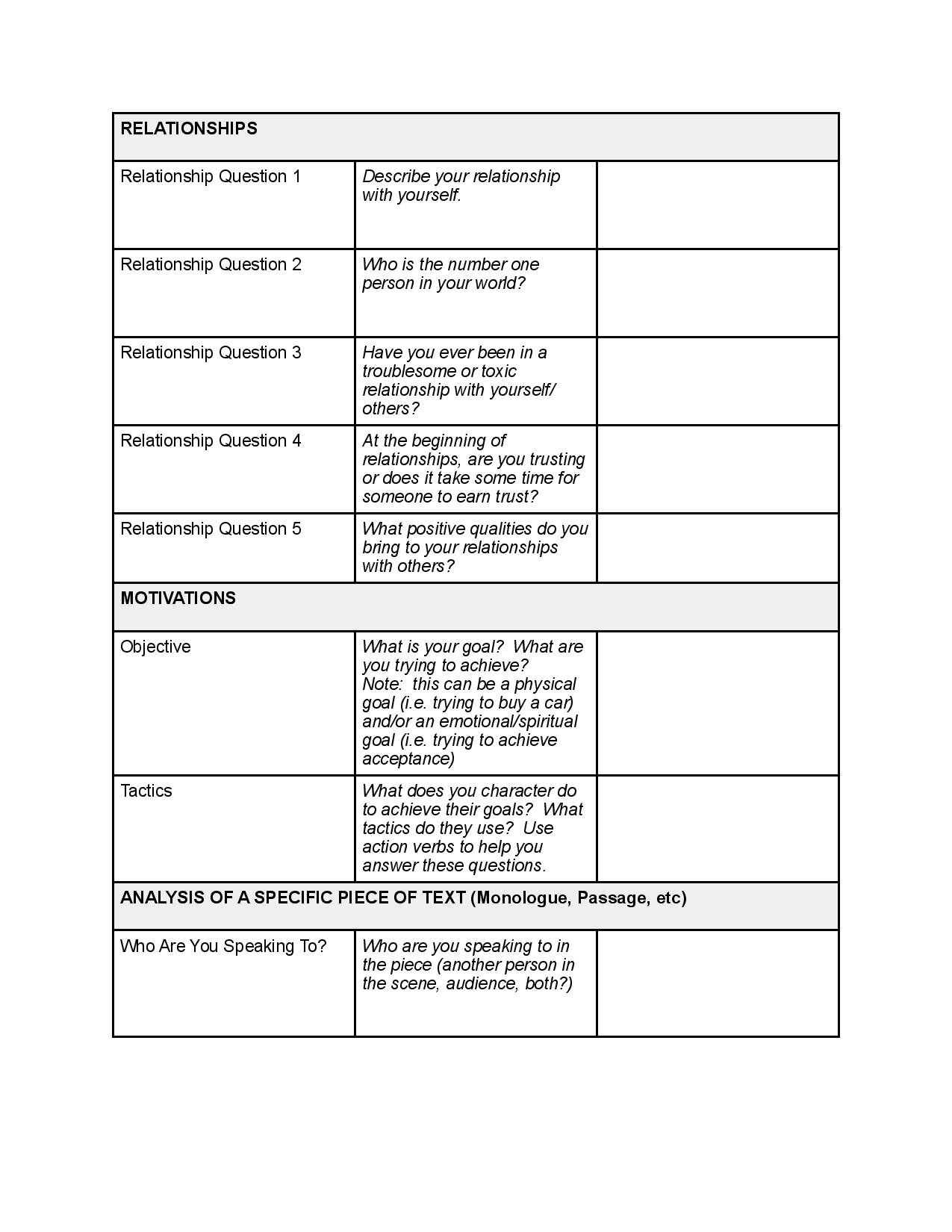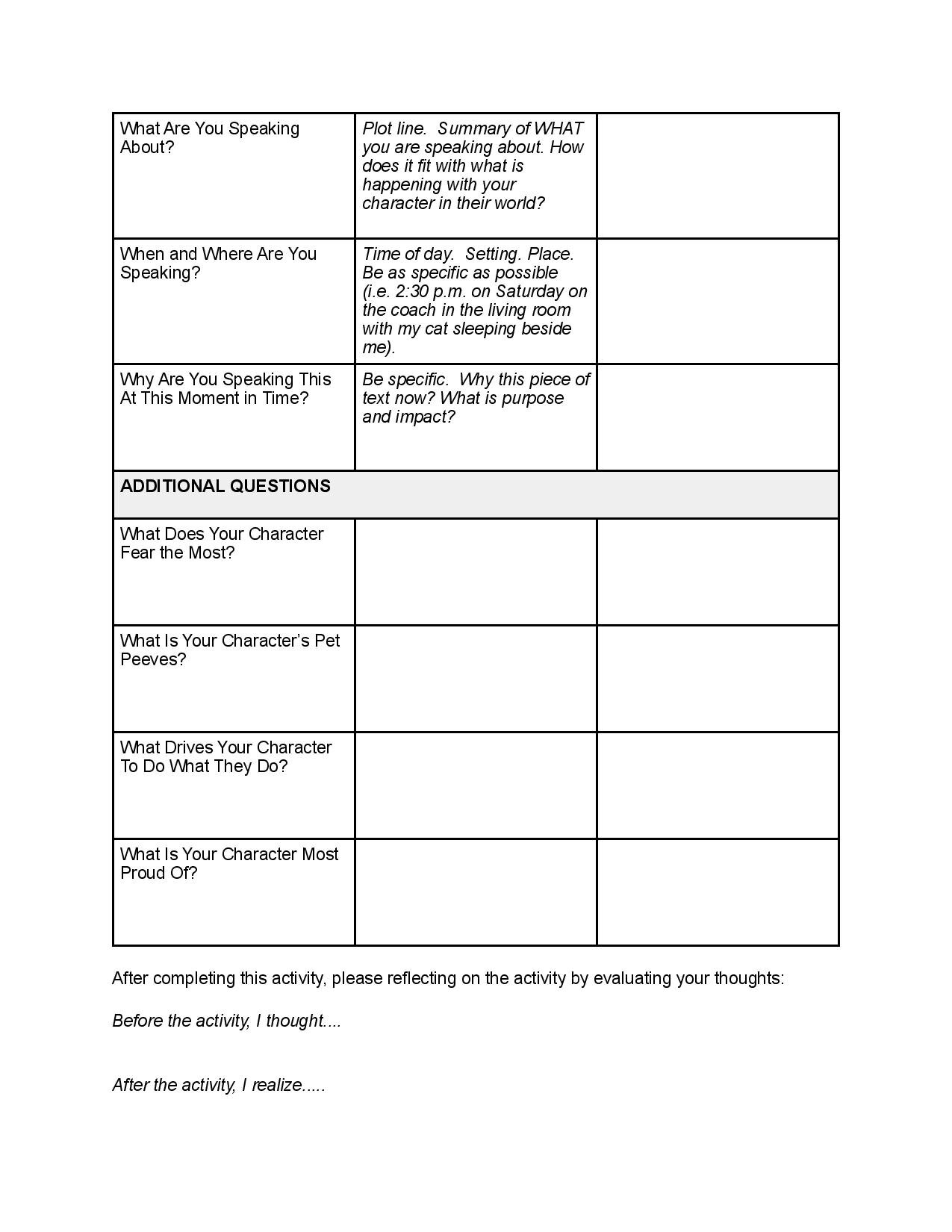Template and activities for creating a detailed, three-dimensional character biography.
A character biography is a detailed, three-dimensional breakdown of your character’s physical, emotional and spiritual world.
There are multiple entry points into creating a character biography, including:
question/answer organizers
creating a visual lookbook/slide deck
first person, free writing
hot seating improv game (i.e. answering questions verbally)
Regardless of the approach, a compelling character biography includes questions to guide deep analysis of the “whys” behind the character’s thoughts and actions.
Creativity rooted in textual analysis will help create a character biography that is truly authentic and grounded.
Here is a sample template that uses the question-and-answer approach to creating a character biography.
The sample template supports the critical thinking prompts found in the Character Biographies: Questions to Create Authentic Characters video.
I encourage my students to use first person voice when completing character biography activities.
Some of the most insightful character biography categories include (but are not limited to):
cultural and social contexts and situations
family history
physical and spiritual characteristics
philosophies
health and wellness
relationships
wants, desires and annoyances
When creating a character biography, please go beyond the basic facts. Although it is essential to know your character's age, the real work comes from diving into your character's personality, conflicts, and rationale for doing the things they do. Humans are complex beings full of experiences and details. Your characters should be that way too.
Click here to purchase an editable Google Doc of the Character Biography Worksheet.
Back to Resources For Educators




